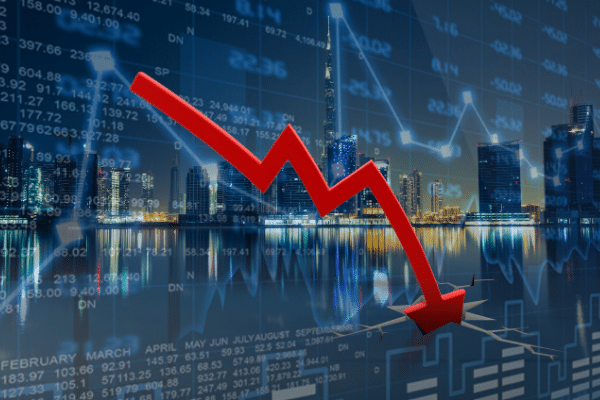
- GDP fell two consecutive quarters in a row, with a dip of 0.9% on an annualized basis and comes on the back of first-quarter GDP data contracting by 1.6%.
- Fed rate hikes are beginning to slow the U.S. economy, with many investors watching the markets closely to see if tightening measures risk pushing the U.S. into a full-blown recession.
The U.S. slipped into a technical recession in the second quarter, according to data published by the U.S. Commerce Department on Thursday which showed that the U.S. economy shrank in the second quarter.
GDP fell two consecutive quarters in a row, with a dip of 0.9% on an annualized basis and comes on the back of first-quarter GDP data contracting by 1.6%.
Weaker business inventory growth headed second quarter data with several retailers indicating that their inventories grew at an unusually quick pace last year, as pandemic-swept shelves were restocked, and supply-chain bottlenecks were alleviated.
In the last two quarters of 2021, U.S. retailers rushed to beef up inventories in anticipation of pent-up pandemic demand and on concerns that supply chain disruptions would leave them with empty shelves.
Instead, that bout of overbuying has burdened some of America’s biggest retailers, including Target, which is known for its excellence in inventory management, with massive overstock that it is now struggling to clear.
A technical recession means two consecutive quarters of GDP contraction and although markets have rebounded on expectations that the Fed will dial back tightening if economic conditions get worse, the central bank remains focused on fighting inflation.
Fed rate hikes are beginning to slow the U.S. economy, with many investors watching the markets closely to see if tightening measures risk pushing the U.S. into a full-blown recession.
But the same way that the Fed was in denial about inflation, it appears to be in denial about recession with U.S. Federal Reserve Chairman Jerome Powell saying that he did not believe that the U.S. was in a recession, drawing attention to how American labor markets remained tight.
To that end, Powell’s view is supported by the data, with U.S. unemployment holding at 3.6%, the lowest since the pandemic struck and even if job losses should mount, the Fed Chairman has indicated that the policymakers would be open to letting unemployment rise as a cost of its fight against inflation.



